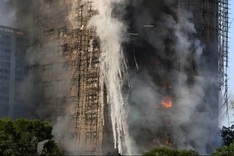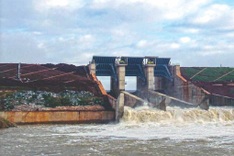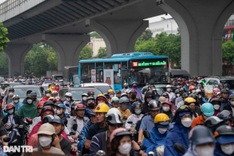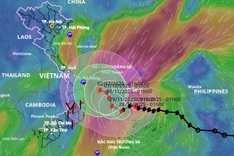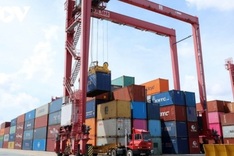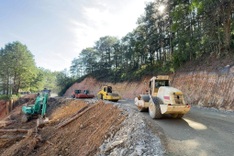
The train used to help protect the railway bridge (Photo by Nhung Nguyen)
According to VNR, at 5.30 am on October 8, water levels on the Thuong River rose to within one metre of the girder of the Bac Ninh railway bridge along the Hanoi-Dong Dang line. Within two and a half hours, the gap had narrowed to only 95 centimetres.
By 1 pm on October 10, the water level had climbed to just 65 centimetres below the bridge girder.
To ensure the bridge’s stability, Ha Lang Railway JSC that afternoon moved a 300-tonne train, comprising six ore-slag wagons, onto the bridge to increase its load-bearing weight.
VNR said the move was a preventive measure to counter powerful river currents that could threaten the bridge’s integrity if the floods continued to rise.
Elsewhere, a section of the Hanoi-Thai Nguyen railway in Trung Gia Commune, Hanoi, was repaired after floodwaters washed away its trackbed. VNR confirmed the damage affected only infrastructure, noting that the line currently serves freight trains only, with three to four trips each month. The section is expected to reopen within two to three days.
According to the national flood-response agency, light rain was recorded across the northern region on October 10, with many areas already drying out. Flood levels on major rivers remained volatile, particularly the Cau, Thuong (Bac Ninh), and Trung (Lang Son) rivers.
By 5 pm the same day, water levels on these rivers had peaked and begun to recede gradually.






